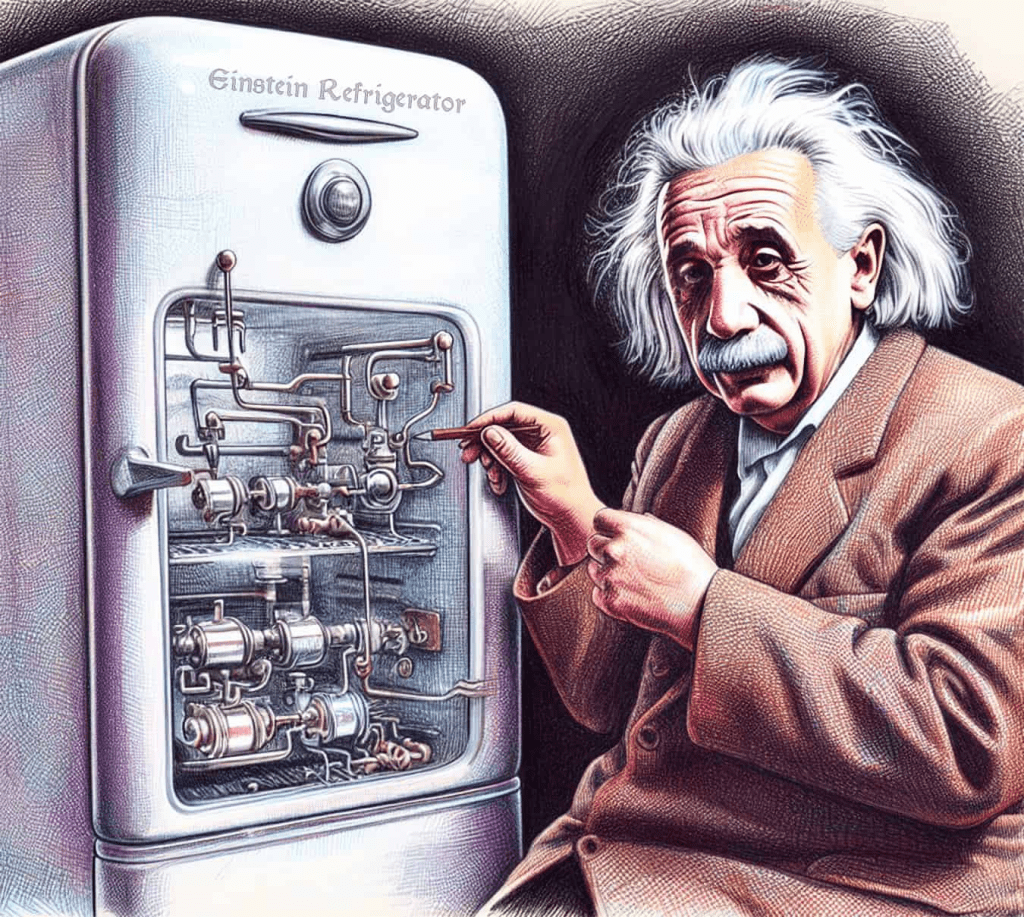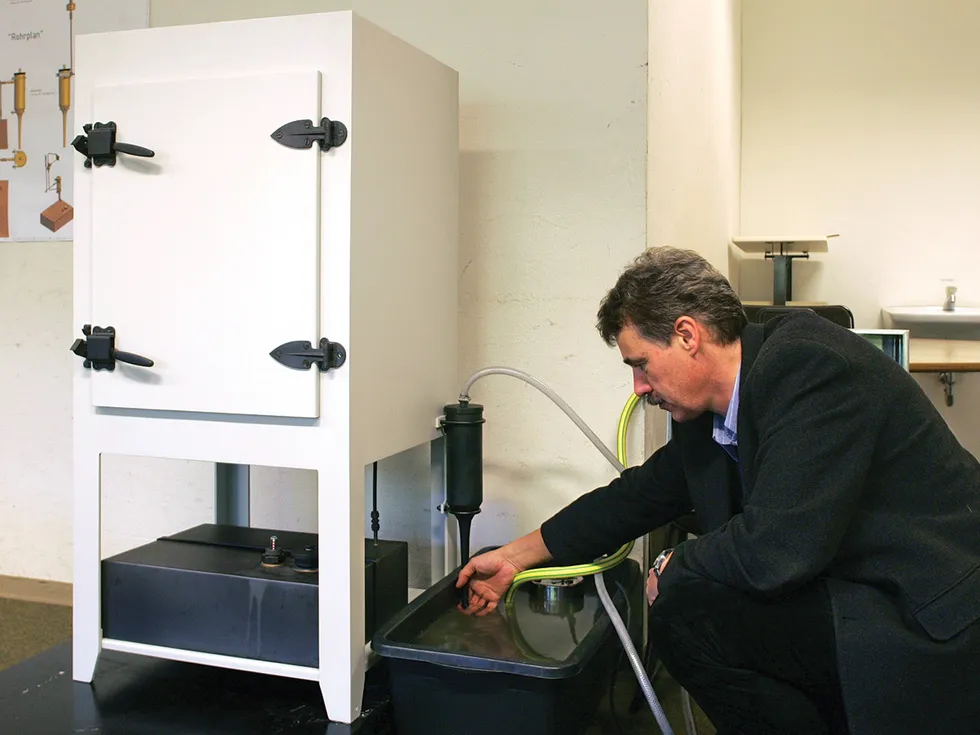In the 1920s, household refrigeration was both a luxury and a threat. Early refrigerators used toxic chemicals like ammonia, methyl chloride, and sulfur dioxide gases that were capable of leaking and killing without warning. After reading about one such fatal leak that took an entire family, Albert Einstein, already a world-renowned physicist, decided to act.
Together with Leo Szilard, a Hungarian physicist and frequent collaborator, Einstein began designing an alternative. What they envisioned was a refrigerator with no moving parts, no electricity, and no toxic gas. It would run entirely on heat, using simple principles of physics and chemistry to achieve cooling. In an era long before renewable energy and green design entered public conversation, Einstein and Szilard were already thinking decades ahead.

How the Einstein-Szilard Refrigerator Worked
The design was elegantly simple in theory, though complex in engineering. Their refrigerator used a combination of butane, ammonia, and water in a sealed system, where a heat source such as a small gas flame or even solar heat would drive the cooling process.

The principle behind their idea was called absorption refrigeration. Instead of relying on compressors and motors, their fridge used pressure and chemical reactions to create a cycle where heat would cause one fluid to evaporate and another to absorb it, resulting in a continuous cooling effect. With no electricity and no moving parts, there was nothing to wear out, break down, or make noise.
Einstein believed the system could be both safer and more accessible to people in remote areas or impoverished regions that lacked reliable electricity.
Video: That Time Albert Einstein Decided to Try to Revolutionize Keeping Food Cold
Patented but Never Mass Produced
In 1930, Einstein and Szilard were awarded a patent for their refrigerator. The design was innovative, eco-friendly, and potentially life-saving. However, the timing was unfortunate. The Great Depression was unfolding, and manufacturers were reluctant to invest in a costly new technology.
Around the same time, Freon was introduced to the market. It was a chlorofluorocarbon (CFC) gas marketed as non-toxic and safe for home refrigeration. Freon-based refrigerators quickly gained popularity because they were quieter, more compact, and easier to manufacture.
As a result, the Einstein-Szilard fridge was quietly shelved. It never entered mass production, and for decades, it remained a curious footnote in the history of science an invention from two of the 20th century’s greatest minds that seemed to fade into obscurity.

A Green Idea Finds New Relevance
Today, with the climate crisis intensifying and sustainable living becoming a global priority, Einstein and Szilard’s forgotten invention is finding new life. Engineers and researchers have begun re-examining the original blueprints, hoping to adapt the design to modern needs.
Some projects have already created updated prototypes, using solar heat instead of gas flames. These modern versions are being considered for use in off-grid areas, disaster relief zones, and regions with unreliable electricity. The fridge’s quiet, durable design also makes it appealing in settings where noise or maintenance is a challenge.
Video:
The Revolutionary Einstein Refrigerator – A Forgotten Invention
What was once dismissed as outdated may now offer part of the solution to today’s most pressing energy concerns. The idea of refrigeration without electricity is no longer science fiction it is a viable, sustainable alternative, thanks to a vision born nearly a century ago.
Why This Matters Today
The Einstein-Szilard refrigerator represents more than just an appliance. It is a symbol of responsible innovation the kind that looks beyond profit and considers human safety, long-term sustainability, and universal access. At a time when consumer goods were often built for convenience or commercial advantage, these two physicists dared to imagine something better.
Their invention also reminds us that brilliant ideas are not always rewarded immediately. Sometimes, the world isn’t ready. But that doesn’t make the idea any less important. The Einstein-Szilard fridge is a powerful case study in how forward-thinking solutions can resurface just when the world needs them most.

Conclusion: A Quiet Machine with a Loud Legacy
Einstein and Szilard’s refrigerator never made it into millions of homes, but its story didn’t end in the past. It is now part of a broader conversation about how to build a more sustainable future using ideas that are both innovative and timeless.
As the world looks for smarter, cleaner ways to live, maybe the answer isn’t always something new. Sometimes, the solution has already been invented. All it needs is a second chance.


